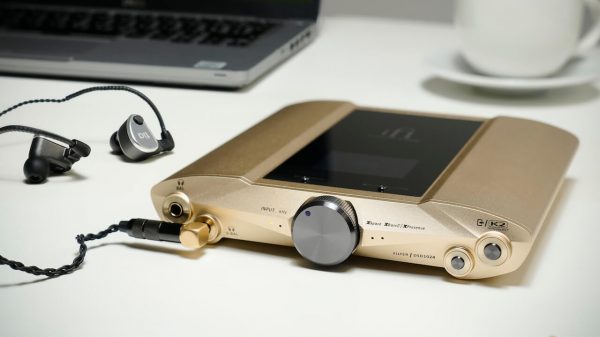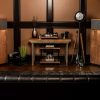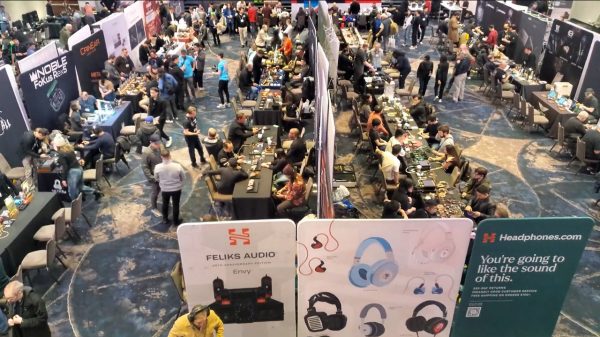Backyard movie theaters took off during the COVID pandemic and after some conversations with manufacturers at CEDIA 2023 and CES 2024 — it looks like companies plan on offering a much wider range of weatherproof CI speakers, portable projectors and screens, and accessories to make this category grow.
Is it time yet to start cleaning off the Weber and reassembling that outdoor movie screen?
Watching movies with your family and friends in a backyard movie theater is a great way to enjoy any evening but it’s a lot more fun in the summer. My parents had fun at a Drive-in north of Toronto in July of 1969 and 9 months later — I was born 4 weeks pre-mature and humming the theme to Lawrence of Arabia.
I’ve always loved the Drive-in but with so few left, the backyard movie theater is the next best thing.
Europeans never really experienced it in the same way as we did. Certainly not in terms of the sheer number of venues.
I set the record for the most movies watched alone in an empty movie complex during the pandemic at 60 and I’m happy to see that consumers are returning to theaters.
Have fun with this but also remember that there are ways to improve the experience and make it something you do every single summer.
A Little History…
The great American love affair with the Drive-in movie theater celebrated its 89th anniversary on June 6, 2022. Although less than 321 still exist across the United States, the Drive-in survives on a smaller scale thanks to a growing number of enthusiasts who have taken the concept back to its place of origin: the driveway and backyard.
In 1932, about a year before he would open the first Drive-in movie theater in Pennsauken, New Jersey, chemical magnate Richard M. Hollingshead Jr. experimented in his driveway by beaming images from a 1928 Kodak projector mounted to the roof of his car onto a screen mounted between trees in his backyard.

Hollingshead Jr. was also the first to experiment with loudspeakers projecting sound from behind the screen, although the final concept would feature loudspeakers mounted to towers.
By the mid 1960s, more than 4,000 Drive-in theaters existed across the United States and Canada, but that number was doomed to steadily decline over the next 20 years for a number of reasons.
The land theaters occupied became increasingly valuable to developers, the adoption of daylight savings time robbed theater operators of one critical hour of projection time, and color TVs and VHS made watching films at home more popular.
Drive-in theaters also struggled to compete with a growing number of multi-screen indoor cinemas, which weren’t affected by weather or limited to after-dusk showings. The once-popular family destination turned into the “passion pit,” and eventually a venue at which to watch exploitation or adult cinema (in select markets during non-family hours, of course). Later, Drive-ins would turn into subdivisions or flea markets, extinguishing the stragglers for good.
Is it worth the expenditure? We think so.
Let’s drive…er…dive in.
Who are the People in Your Neighborhood…
Depending on where you live, the concept of a driveway or backyard home theater may be a non-starter due to noise restrictions, safety regulations, or because you live in an apartment, and it is unlikely that your landlord will permit a movie theater on the roof.
Fair enough; who wants to be liable if a person or a piece of equipment goes flying? Really, as much as we think the idea of watching Star Wars 10 stories up under the stars sounds like a great plan, we also don’t think it’s worth the risk of someone getting hurt.
Bureaucracy aside, there are social norms to navigate. While those of us who live in suburbia like to think that what takes place within our property line is our business, the reality is that everyone has at least one neighbor who hates noise (at any hour) or the sound of adults and children having fun outdoors at night.
As someone who lives on the edge of a college campus with the surrounding homes rented out to college students, I understand that concern very well. With a house filled with children, I don’t appreciate it when they have loud, drunken parties (or worse) until 4 in the morning.
The smartest thing you can do is simply be a good neighbor and invite them. Even if they decline, it will let them know what you’re up to so you can avoid a visit from the local police, and if they show, you might even get some free beer or cake out of it.
The reality in 2024 is that people finally feel comfortable with public gatherings again and building a better relationship with your neighbors can’t be a bad thing.
The pandemic also created a historic exodus from New York City and Brooklyn and for some reason – thousands of them decided to move to my corner of the Jersey Shore where I now must contend with the sounds of construction from 7 a.m. to 10 p.m. most nights.
My backyard home theater is the least annoying thing right now in my neighborhood.
When Netflix Studios at Fort Monmouth opens in 2025 less than 2 miles from my front door — backyard movie watching is going to become the big thing locally.
Are You Licensed to Thrill?
While it’s highly unlikely that an entertainment lawyer or someone from Interpol is going to drive by while you watch a movie in your driveway or backyard, the reality is that there are copyright laws that prohibit you from charging to watch a film on your property, or publicly advertising the showing.
If you want to invite 20 of your closest friends over for a BBQ and to watch Andor, that’s your business, but don’t make it public knowledge with a flyer. Just because you paid for that UHD 4K disc or stream Disney+, doesn’t give you the legal right to become the AMC down the street.
Keep It Dark…
As much as we’d like to think it goes without saying, it’s important enough to reiterate: Watching movies outside is way more enjoyable when its dark.
Projected images have better black levels and contrast when the projector is the sole source of light. A full moon is not going to completely ruin your party, but if your backyard or driveway is bathing in the yellow light (and buzz) of your neighborhood’s street lamp, it’s going to take away from the experience.

Waging war with the sun is an even worse proposition. Despite advances in projector and screen technology, it is a losing battle unless you can afford something like the Stewart Oasis outdoor screen with Grayhawk or Firehawk material, and a projector with an extraordinary amount of light output.
Just know this is an extremely expensive endeavor and it takes away from the D.I.Y. aspect of the project that makes it fun to begin with. I managed to find an outdoor screen for $150 from Elite that produces an excellent image.
My backyard also faces towards the ocean (only a few blocks away) and Superstorm Sandy changed how much direct sunlight we get forever by removing 000s of huge trees and structures that created a lot of natural shade later in the day.
Getting started
We already know a 10-story rooftop is not a good place for an outdoor home theater. So what are some good options? For one, consider your driveway. Unless the mason responsible for your driveway was completely incompetent, its surface should be level enough to set up a portable screen, loudspeakers, chairs, and projector without much hassle.
The driveway is also appealing since there’s probably a power receptacle inside your garage which will make set-up that much easier. Plus, should the weather turn nasty without much notice, you’ll be in a good position to move everything inside, so you don’t have to watch your projector and audio equipment get destroyed (assuming your garage isn’t already packed, of course).
If the driveway isn’t an option, consider using the outside wall of your garage as a place to mount the screen. For that matter, any other flat surface on the outside of your home will do. If you’re short on flat surfaces and can take advantage of some well-placed trees, you may be able to hang a screen between them. Otherwise, an inflatable screen or portable screen will probably be necessary.

Another option that can work is your deck. My deck is 25’ x 10’ and I was able to use the 10’ section with the most shade as the perfect location for my portable outdoor screen. It’s a stable platform with a railing and lets us to watch without anyone on the street being able to see it.
Aside from the location of the screen, the most important thing to consider when setting up an outdoor home theater is proximity to power. A heavy-duty extension cord (as long as 25 feet) and a power strip should be considered essential accessories.
Aside from your projector, you will need to power your source (Blu-ray player or Roku Box) and audio amplification. When possible, choose an outlet that is on a relatively clear circuit to avoid a sudden power outage in the middle of an exciting flick.
Media streamers have become the primary source for most home theaters so a reliable wireless connection or powerline extender with an Ethernet cable is mandatory. If you have an empty power receptacle outside, plug in the extender and run the cable directly into the back of the Roku box.
Another option that might work well is plugging a Roku Streaming Stick into an open input on your projector if it doesn’t offer its own streaming app.
Permanent or Temporary Installation?
If you decide to go with a backyard location for your outdoor theater and you don’t mind assembling and disassembling the entire system every time you watch a film, using an extension cord and power strip is the best way to go for power needs.
On the other hand, if your backyard theater is going to be a routine destination, a more permanent setup might not be a bad idea. The following is especially ideal for those who want to run their outdoor rig off an existing indoor home-theater setup.
Consider digging a trench from your home to the location where your projector is going to be installed. Line the trench with 4-inch PVC pipe and use enough of it to create a vertical base for a projector platform.

Run both an extension cord and a single HDMI cable from inside your home through the pipe and have it exit through a hole in the platform. Make sure to fill it with putty to deter any unwanted guests who fancy a dry tunnel into your house. (Note: If you own a swimming pool, remember to route all cables as far away as possible.)
Finally, if you decide to set up your outdoor home theater away from the house, don’t forget to install some form of lighting. We think torch-mounted citronella candles are a great idea because they can be firmly secured into the ground and keep you and your guests safe and bug-free at the same time.
Go Big and Go Home
Your choice of screen is as important as your choice of projector. Fortunately, the cost of a weather-proof outdoor screen is considerably less than that of a similarly sized indoor screen.

While we understand the temptation to just hang a large sheet on a wall or between two trees, the reality is that a weather-proof screen such as the 120-inch 16:9 Elite Yard Master 2 ($179 at Amazon) or a do-it-yourself FlexiWhite 165-inch screen kit for around $200 from Carl’s Place make a lot more sense. Or splurge for a 200-inch screen screen for $1,358 at Amazon.
Aside from the significant improvement in picture quality, outdoor screens will last many years if you take care of and are easy to install. The Elite Screen’s Yard Master comes in sizes up to 200 inches (diagonal) and attaches to a sturdy metal base that can be secured with provided cables and spikes to either the ground, a deck, or two trees.
The less expensive screen from Carl’s Place is designed to be attached to a wall, or between two anchors like trees with bungee cords. It does come with stand option for about $50 more.
If money is no object, the electronically controlled and retractable Oasis from Stewart is our top pick. Since Stewart offers the Oasis with any of its screen materials, it is the best choice for those who insist on watching films during the day.
Inflatable screens have become popular lately, and if you don’t mind spending as much as $11,000 for a set-up that includes the screen, amplification, and loudspeakers, it may be an option to consider.
There are considerably less expensive options available from Target, Wal-Mart, and other vendors like Amazon.
Tip: Get the biggest screen you have space for.

A Projector for All Seasons?
Selecting an appropriate projector for use outdoors seems like a simple enough task, especially if you already own a LCD or DLP projector with a fairly high-lumen output rating. However, do you really want to remove your existing projector from its mount and risk taking it outside?
Also, aside from the risk of physical damage, are you up for recalibrating the projector for the new venue and screen material? If you plan to make outdoor shows a routine, a separate projector makes sense.
And since we’re talking about picking up a new projector, let’s take a look at what makes a solid outdoor projector. We’re proponents of the highest possible resolution for any type of home theater set-up (HDTV or projector), so a 4K projector is going to be your best bet. Although, you can still save by opting for a 1080p HD model. Surprisingly, the difference will only be noticeable depending on your seating distance.

It’s better to prioritize brightness over resolution when a compromise is necessary. Panasonic, Epson, ViewSonic, XGIMI, and BenQ, all offer affordable 720p/1080p projectors with lumen ratings above 2,000.
Finally, before buying a projector, take into account its throw distance rating. This will affect where you can place your projector relative to your desired screen size. If you are at all constrained by where the projector can be placed, take that distance into account when making your projector and screen choices.
A sharp image, brightness, and good color accuracy are what you need to care about.

Ultra Short Throw Projectors?
Another new option that might make sense for a few reasons is an Ultra Short Throw (UST) Projector. They’re easy to transport, sit just below a screen, and have built-in speakers and streaming apps. Although they’re designed for indoor use, they’re light enough to be carried outside for a backyard home theater setup.
Most UST projectors are designed to look best displaying 100″ – 130″ images. You can force them to display larger, by pulling the projector farther away from the screen. However, that may cause softer focus and geometric distortions. How much that could be a problem may depend on viewing distance and source material.
For more details, check out our list of the best 4K ultra short throw (UST) projectors currently available.
What is a UST Screen?
An ultra short throw projection screen is one that is specially built to pair with a UST projector. They are labeled as ALR (ambient light rejecting) screens, and their main purpose is to enable higher contrast daytime viewing. If you’re only watching at night, a regular white screen can work just fine.
Besides the screen material, screen installation should be considered. Screens come in a fixed frame, roll-up, roll-down, and can even been motorized. Most ALR screens are either a fixed size or retractable between 100 – 120-inches.
Fixed screens are put together once, and either mount on a wall or attach to a floor stand. They aren’t heavy, but large enough that moving them outside requires two people.
A retractable motorized ALR screen is another option for outside viewing. This setup only requires an extra power outlet, but can be quite heavy to move. So it’s another two person job, and again you won’t want to leave it outside. However, it’s dead simple after that — just hit one button and watch the screen reveal itself.
Before deciding to use a UST projector outside, remember the UST projector itself needs precise placement. It will be more finicky than other projector types to setup, because it not only needs to be placed at the proper horizontal distance from the screen, but also the right height (vertical distance) below the screen. A small table or stand may be needed to get the positioning just right. Also remember, ALR screens aren’t weatherproof so you’ll want to move them into indoor storage between uses.

Lifestyle Projectors?
There is a new category of portable projectors called lifestyle projectors generally priced between $1,500 to $3,000. Although they use the same laser light source as UST projectors, they are smaller and less expensive yet can still produce massive 100 to 200 inch images. The main difference is lifestyle projectors are placed about 5-10 feet away from the screen instead of below it.
Because of their flexibility, affordability and built-in smart TV features, lifestyle projectors a great choice for outdoor movie watching. Most have auto-calibration features which makes setup a breeze.
You can point them at any screen, even the cheap portable screens available from Amazon, but they’ll only look good when viewing at night.
Although both UST and lifestyle projectors come with built-in speakers, impactful cinematic sound will require external outdoor speakers.
Tip: Lookup pricing of current lifestyle projector models at ProjectorScreen.com.
Stepping Beyond Drive-in Audio Quality
The final component of any driveway or backyard home theater is the sound. You can have a lot of fun with this since there are so many options. For an outdoor speaker system, we tend to recommend a 2.0 system. It’s more cost effective, easier to set up and generally more practical, since it requires the least amount of wiring. Please remember to use cables that are safety approved for outdoor use in the case of wood decks, rain, and proximity to BBQs and swimming pools.
If you’ve ever considered installing outdoor speakers that will be powered by your existing A/V receiver or multi-room audio set-up, this is the time to opt for a full-range pair that you can use for your backyard movie theater.

The outdoor loudspeaker segment has become extremely popular, with models offered by Bowers & Wilkins, Definitive Technology, Polk Audio and Klipsch (among many others) offering excellent sound quality and reliable protection from the elements.
All-weather loudspeakers from manufacturers such as JBL are also a good alternative in this scenario, if you’re looking for a resilient speaker that can project sound over a large area. If they can withstand the elements in outdoor facilities such as baseball stadiums and parks, they’ll do just fine in your backyard.
Active or powered loudspeakers make the most sense here. You’re not aiming for the best surround sound experience but a solid stereo one that will fill your space with sound that engages. A cheap passive soundbar might seem very appealing here but you’re also going to need an AVR to go with it.
If you are looking for a more permanent outdoor surround sound solution and your outdoor space permits the use of CI in-ceiling loudspeakers — there are some very high performance models available from companies like Theory Audio Design, Sonus faber, and Focal.
These brands have launched weatherproof versions of the best CI in-wall/on-wall and in-ceiling speakers but this recommendation comes with a few caveats.
The Theory Audio Design products created by Paul Hales offer spectacular performance both indoors and outside, but they also require an investment in one of their proprietary amplifiers and a rather high quality AVR or AVP with balanced connections to make this all work properly.
Do not install a system of this caliber outdoors by yourself; hire a licensed and trained custom integrator who has experience with these types of products and outdoor set-ups which are more complicated to install properly.
Tip: Check current pricing on outdoor speakers at Crutchfield.

Soundbar?
Using a soundbar might seem like the best way to bring the cinematic experience outside, but doing so will require placing all of your sources next to the soundbar and connected via HDMI or optical cables to make it all work.
You will also need something level and wide enough to place the soundbar on so that everyone watching can enjoy the best possible audio experience.
We’ve seen soundbars with TVs mounted to outdoor fireplaces inside screened porches in Georgia. It certainly can work, but requires extra work by an installer to weatherproof both products, which defeats any cost savings.
Tip: Although soundbars can work in weather protected areas outdoors, they generally aren’t certified for outdoor use and are unlikely to last. We’d advise against them.
Final Thoughts
Creating a backyard movie theater might seem like a lot of work, but it’s possible to create something that you and your family can enjoy for the long-term and when conditions are right — enjoy with friends and neighbors as well.
Related reading: Best Outdoor Movie Screens












































Michael Powell
November 3, 2023 at 9:55 pm
With the decline of the Drive-In Movie Theater, backyard movie theater layout ideas are keeping alive the spirit of the outdoor movie nights. Outdoor movie nights are also part of our summer pastime, so we’ve got to do our best to keep that spirit alive, especially for the kids of this generation!!!